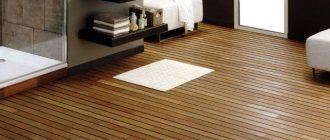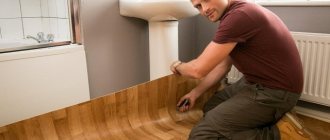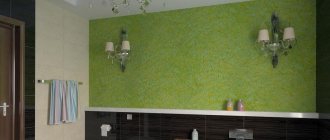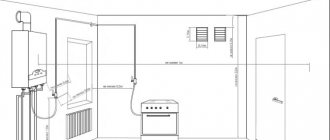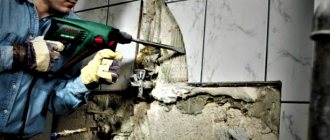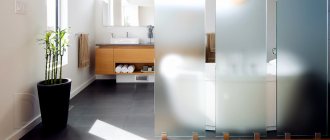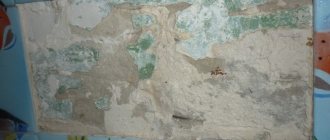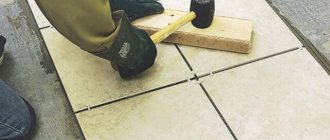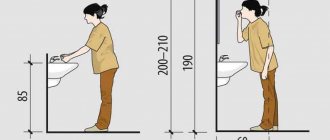A large article about the theory of ventilation and air gaps. Recently, questions on this topic have become more frequent. It is believed that a ventilation or air gap can retain heat and improve the performance of the wall. Here is my opinion on this topic
Dmitry Belkin
Author: Dmitry Belkin
In this article I will consider the issues of ventilation of the inter-wall space and the connection between this ventilation and insulation. In particular, I would like to understand why a ventilation gap is needed, how it differs from an air gap, what its functions are, and whether a gap in the wall can perform a thermal insulation function. This issue has become quite relevant lately and causes many misunderstandings and questions. Here I give my private expert opinion, based only on personal experience and nothing else.
Denial of responsibility
Having already written the article and re-reading it again, I see that the processes occurring during the ventilation of the inter-wall space are much more complex and multifaceted than I described. But I decided to leave it like this, in a simplified version. Particularly meticulous citizens, please write comments. We will complicate the description as we work.
Common mistakes when insulating floors
Floor insulation is an important process for creating comfortable conditions in a house, apartment, bathhouse or other room. However, things don't always go smoothly. Let's talk about what mistakes are most often made by non-professionals when insulating floors and what consequences they lead to.
Rmnt wrote in detail about how to insulate the floor in a wooden house. Our instructions will help you avoid mistakes, but to ensure that you do everything correctly, we will tell you what shortcomings are most often made in the process of insulating the floors of various rooms and buildings.
How to order professional services of a specialist to install a vapor barrier in the bathroom?
If you need to order the help of a specialist to install insulation in your home, then you should know what to do in this situation. It is best to use one of the following options:
- use the services of workers of a repair and construction company;
- entrust a high-quality vapor barrier device in the house to a freelancer;
- place an order for services using an application on the YouDo platform.
The YouDo website will allow you to find a performer with minimal time and effort. After filling out the application and receiving responses, you will be able to select craftsmen who are ready to undertake the installation of vapor barrier at affordable prices. Contractors today offer their customers the best terms of cooperation and reasonable cost of services.
Do not forget about unscrupulous contractors who offer low prices for services, but do not provide any guarantees of the result of the work. If you encounter such a specialist, it is better to refuse his services and continue searching for a contractor.
The first mistake is improper storage and unpacking of insulation.
Let's say you bought mineral wool, which is often used as insulation between joists. It is sold in original packaging and is stored well in it. However, after delivery to the construction and repair site, the following rules must be observed:
- The insulation must be unpacked at least 24 hours before installation. It is best to do this in the insulated house itself, and if the procedure is carried out outside, near a construction site, only under a canopy.
- You cannot leave unpacked insulation open for a long time; store it only indoors, because moisture will have a detrimental effect on the properties of the material.
- After laying the insulation, you need to quickly move on to installing the top layer of the “pie” of the floor covering.
How to properly waterproof?
There are many ways to arrange waterproofing. You can lay roofing felt, fill in soil enriched with bentonite and liquid glass, or fill in a polymer floor. These are effective, but quite expensive options. Therefore, in practice, more cost-effective methods are most often used.
The two most commonly used methods are gluing strips of waterproof material and applying a water-repellent solution. In the first case, so-called pasting materials are used, in the second - coating materials.
Their composition necessarily includes bitumen in various proportions, whose toxic properties are reduced due to the additional introduction of various polymers.
Pasted waterproofing
The first representatives of pasting materials can be considered roofing felt and roofing felt, which are quite toxic and difficult to install coatings. Modern “pasting” is made on the basis of flexible fiberglass, elastic polyester and plastic fiberglass.
In any case, the material is easily spread and takes the desired shape. Bitumen is applied to the base on both sides, which has the necessary waterproofing properties. A layer of glue is also applied on the inside, which ensures maximum adhesion to the base.
Sand may be applied to the surface of the insulating material. This is done to improve adhesion to the coating that will be laid on the insulation.
Pasting-type materials are divided into two large groups:
- Self-adhesive coatings with a layer of glue applied to the reverse side. To install them, you just need to remove the protective film from the sticky surface and put the pre-cut strips in place.
- Welded insulation. During the installation process, the bottom layer of the coating is melted with a gas burner or a hair dryer. After which the material is placed in the place intended for it.
Mistake #5 - insulation is too thin
If the insulation layer is too thin, then the desired effect will not be achieved! You cannot save on this point, especially if we are talking about a private house or apartment on the ground floor. For example, to maintain heat in a house at a frost of -35 °C, the thickness of the mineral wool layer on the first floor should be 14 centimeters, sawdust concrete - 18 centimeters, and expanded clay concrete - 27 centimeters.
Preparation for installation of a water vapor barrier layer
Laying a vapor barrier involves carrying out a number of preparatory works. First, you need to select materials for all layers, as they say, otherwise the pie, and also decide what kind of vapor barrier
better for the floor. This “pie” consists of the following stages (starting from the top):
Preparation begins with the base floor itself. All boards, wooden blocks and other parts made of wood should be treated with a special disinfectant composition that prevents rotting, the formation of fungus, and also protects against insect attacks.
If we are talking about repairing the floor, and not about building a new building, then the finished floor boards, floor covering and existing vapor barrier
on the floor must be removed in advance. All debris must be removed and then the wooden structure should be treated with an antiseptic.
Mistake seven - using impermeable membranes to protect against moisture
The point is that often, in order to protect the insulation from moisture that comes from below, an impermeable material is used. However, moisture condensation will still occur in the insulating layer, despite the use of a vapor barrier over the insulation. Therefore, the lower protection - the waterproofing membrane - must be diffusion so that moisture does not accumulate inside the insulation, but freely comes out in the form of steam.
TechnoNikol
An international company offering products with extended service life. The vapor barrier guarantee is several decades. The range includes the following products:
- Universal vapor barrier film. Suitable for interior work. Can be installed on any surface, be it walls, ceiling or roof.
- Diffusion membrane. Designed to protect under-roof insulation. It is protected on both sides by polypropylene sheeting. Breathes, thereby providing good ventilation.
- Non-perforated vapor barrier film. A specialized material designed to protect the roof. Features reinforced mesh fabric for added durability.
Choose any of the brands presented in accordance with your current tasks, and the building structures of your home will be reliable and durable, and your living will be comfortable.
Why do you need a floor vapor barrier?
Steam protection is the most underrated, but extremely important point in construction. Due to the difference in temperatures indoors and underground, a significant amount of humid air is formed. Thus, water in the form of condensation settles inside structures, in particular between floor layers.
Mold, mildew, rotting - all this is the result of the lack of high-quality vapor barrier for wooden floors.
It is necessary to provide floor protection for each floor of the building:
- In the ground floor floor, the main cause of moisture is damp soil or basement;
- On the upper floors, steam is also formed as a result of the use of household appliances, bathrooms, showers, stoves, and heating radiators during the cold period.
Types of materials for vapor barrier
Despite the same purpose, means intended to contain steam differ both in the components from which they are made and in their properties. Of the most popular, four groups of vapor barrier materials can be distinguished:
- Polyethylene film
- Polypropylene film
- Foil mats
- Diffuse membrane
Polyethylene film
The most budget-friendly type of vapor barrier protection. The thin film, which does not react well to sudden temperature changes, breaks easily, making it inconvenient for installation.
Peculiarities:
- Low cost;
- Requires a ventilation gap;
- does not allow air to pass through, thereby creating a “greenhouse effect” indoors;
- Weak strength. During installation, rupture easily occurs, sharply reducing the vapor retention rate;
- high flammability;
- breaks down at low temperatures.
Polypropylene film
It is a more practical analogue of polyethylene. At the same time, they are not significantly more expensive. It does its job well and is less susceptible to damage from temperatures, exposure to UV rays, and mechanical stress.
Expert advice
Recommendations from the experts will help you choose the appropriate vapor and waterproofing material:
- Glassine can be considered the most budget-friendly vapor barrier option. Each square meter of this material allows up to 70 ml of moisture per day, so it is recommended to use it only in rooms with normal humidity and utility buildings.
- Films made of polyethylene and polypropylene are passed through 1 m² of area per day up to 5 ml of water vapor. In wooden buildings, craftsmen advise using durable reinforced films that are resistant to temperature changes, mechanical stress and sunlight. They can be used in wooden floors in combination with laying loose thermal insulation.
- Polyethylene films with a foil layer have the lowest vapor permeability, which is 0.04-2.55 mg/m². They are ideal for installation in places with temperature changes and high humidity.
- Diffuse membranes for protection against condensation allow 3-20 mg/m² of water vapor to pass through per day. In the construction of a wooden floor they are mounted on both sides of the thermal insulation.
When choosing double-sided polymer membranes, it is especially important to install them with the correct side facing the insulation. They have one rough side. This surface should be turned towards the insulation, from which water vapor evaporates. The smooth surface of the material prevents the penetration of moisture, so it should be placed in a room with high humidity.
Technology for laying wooden floors with vapor barrier
The classic technique of laying floors based on logs has been around for many years, and its principle invariably lies in the construction of a “floor pie”, usually consisting of:
- Beams. Most often, coniferous timber with a cross-section from 110x60mm to 220x180mm (depending on the size of the span). They require careful treatment with antiseptics and protective impregnations, because are the support of the entire future structure.
- Lags. Bars of smaller cross-section. They are attached to the beams and leveled, providing support for laying the subfloor;
- Moisture-proof membrane. Serves as a protective layer against moisture getting on the logs;
- Rough floor. Base for laying insulation. Most often made from sheet materials (OSB or plywood);
- 1st layer of vapor barrier . Saves the heat-insulating material from moisture “from below”;
- Thermal insulation . Helps retain heat inside the house. The most commonly used insulation is extruded polystyrene foam, mineral wool or foam mat with a foil layer to curb UV rays;
- Ventilation layer . An air gap approximately 30-50mm thick between the thermal insulation and the finished floor. Necessary when using sealed “non-breathable” vapor barrier films (polyethylene or polypropylene). Provides the necessary air circulation for the floor structure. Not required when using diffusion membranes.
- 2nd layer of vapor barrier . Protection of the finishing layer from steam from the outside and moisture seepage into the thermal insulation from inside the room;
- Finish floor . Finish coating (Parquet, laminate, board, etc.).
Properly selected high-quality materials will significantly improve the life of the floor and create the most comfortable living conditions. This is definitely not worth saving on.
Useful article? Add to your bookmarks!
Polypropylene film
The easiest vapor barrier material to install is polypropylene film. It has high strength and impressive durability. Compared to the same polyethylene, propylene is more durable and better resistant to weather conditions.
This material was first made exclusively from propylene, however, as operation showed, condensation formed in the film on the insulation side. Then manufacturers began to reinforce the film, adding an additional layer of viscose fibers with cellulose. Such a layer easily absorbed and, most importantly, retained a significant amount of moisture, preventing the formation of drops. As the humidity decreased, the accumulated moisture gradually dried out thanks to ventilation.
Is a ventilation gap always necessary?
A question about house cladding is asked by Arkady Karpov, Moscow: Hello, I want to ask you a question. Now a team is doing the sheathing of my house, insulating it and covering it with siding. After laying the film, siding is immediately sewn on top of it. I say – where is the gap? They say no need, we always do this. Are they doing the right thing and doing it the right way?
Answered by Andrey Volokolamtsev, foreman of Avgust LLC, Podolsk.
Hello, Arkady. Perhaps what your builders are doing is not entirely correct, or perhaps it is not at all correct. So that you have a normal and systematic understanding of this issue, let’s first look at your case, and then see if a ventilation gap needs to be done and when.
So, let's figure out what material your house is made of. If the walls are made of vapor-permeable material, then if you use a decorative layer of siding, you must make a ventilated gap. Because moisture from the interior of your home in the form of steam will penetrate through the walls into the insulation and moisten it.
Insulation materials such as basalt wool do not like moisture very much. When they get wet by at least 15 percent, they already lose 50 percent in their thermal resistance.
Physics of processes inside the wall
Condensation
Why dry the wall? Is she getting wet or what? Yes, it gets wet. And you don't need to hose it down to get it wet. The temperature difference from the heat of the day to the coolness of the night is quite enough. The problem of getting the wall, all its layers, wet as a result of moisture condensation might be irrelevant in a frosty winter, but here the heating of our house comes into play. As a result of the fact that we heat our houses, warm air tends to leave the warm room and moisture condensation occurs again in the thickness of the wall. Thus, the relevance of drying the wall remains at any time of the year.
Convection
Please note that the site has a good article about the theory of condensation in walls
Warm air tends to rise and cold air tends to sink. And this is very unfortunate, since in our apartments and houses we live not on the ceiling, where warm air collects, but on the floor, where cold air collects. But I seem to have gotten distracted.
It is impossible to completely get rid of convection. And this is also very unfortunate.
But let's look at a very useful question. How does convection in a wide gap differ from the same convection in a narrow gap? We have already understood that the air in the gap moves in two directions. On a warm surface it moves up, and on a cold surface it goes down. And this is where I want to ask a question. What happens in the middle of our gap? And the answer to this question is quite complicated. I believe that the layer of air directly at the surface moves as quickly as possible. It pulls along layers of air that are nearby. As far as I understand, this happens due to friction. But the friction in the air is quite weak, so the movement of neighboring layers is much less fast than the “wall” ones. But there is still a place where the air moving up comes into contact with the air moving down. Apparently in this place, where multidirectional flows meet, something like turbulence occurs. The lower the flow speed, the weaker the turbulence. If the gap is wide enough, these swirls may be completely absent or completely invisible.
But what if our gap is 20 or 30 mm? Then the turbulence can be stronger. These vortices will not only mix the flows, but also slow down each other. It seems that if you make an air gap, you should strive to make it thinner. Then two differently directed convection flows will interfere with each other. And that's what we need.
When exactly is a ventilation gap needed?
So, in your case, a ventilated gap between the insulation and the outer decorative layer will definitely be needed in the following cases:
- The use of any insulation that loses its properties when wet.
- The material of the walls of the house allows steam to pass from the interior to the outer layer.
- Decorative finishing is a layer of vapor barrier or moisture-condensing material.
The last point can fully be attributed to vinyl siding, metal siding and profiled sheets. These materials will not allow moisture to escape from the insulation if they are tightly sewn onto the insulation layer.
When is a ventilation gap not needed?
In what cases can a ventilation gap be omitted:
- The material of the walls of the house does not allow steam to pass from the interior to the outside, for example, concrete.
- The insulation on the interior side is well insulated with a vapor barrier.
- External material allows steam to pass through well, for example, facade plaster.
The wet facade system is built on this ability of facade plaster, when the walls can be insulated with foam plastic or basalt wool.
Any vapor that gets into the insulation is released directly through the plaster layer and vapor-permeable paint. In this case, there is no ventilation gap between the insulation and the decorative layer.
Installation example without ventilation gap
As a small example, let's look at an installation example without the need for a ventilation gap:
- At the beginning there is a wall
- Insulation
- Special reinforcing mesh
- Mushroom dowel used for fastening
- Facade plaster
Thus, any amounts of steam that penetrate the structure of the insulation will be immediately removed through the layer of plaster, as well as through vapor-permeable paint. As you may have noticed, there are no gaps between the insulation and the decoration layer.
When else is a ventilation gap necessary?
In what other cases will you need a ventilation gap between the wall and the decorative covering:
- The material of the decorative layer promotes the formation of condensation.
- The wall material under the decorative layer can deteriorate from moisture (rot, cracks, etc.).
Let me give you a simple example. If you are planning to cover a wooden house with a metal profiled sheet, then you cannot do without a ventilation gap.
Otherwise, all the moisture that will condense on the inner surface of the corrugated sheet will be absorbed by the wooden walls, which will collapse as a result.
In the case of a ventilation gap, moisture, of course, condenses on the inner surface of the profiled sheet - this is metal. But it does not have direct contact with the surface of wooden walls. And the air current that is present in the ventilation gap carries away this moisture in the form of steam and removes it from the space between the decorative layer and the wall.
Consider which of the above cases is yours and choose whether you need a ventilation gap or not. Look at what kind of insulation you have, what wall material.
See more on this topic on our website:
- How to decorate a house from KBB? Question: Good afternoon, dear gentlemen! Please tell us how best to decorate the outside of a house made of expanded clay concrete blocks (CBB), what façade would be appropriate here, what materials can be used.
Insulating the walls of a wooden house from the outside with polystyrene foam Recently, people have begun to give preference to wooden houses. The first thing that attracts this natural material is its environmental friendliness. In addition to this, the wood is very good.
Sectional frame wall - diagram and comments This page shows a sectional frame wall along with insulation, which is mounted between the frame posts. Simply put, a frame wall in section looks like this.
Insulating the walls of a frame and wooden house with sawdust If you look at the history of the construction of residential buildings in cold regions, insulating walls with sawdust began to be practiced not so long ago. Sawdust as wall insulation during construction.
Construction of the walls of a frame house - pie diagram The simplest construction of the walls of a frame house is vertical posts connected by upper and lower frames and tied with jibs for additional structural rigidity. When using slab.
The essence of the problem (subject part)
Let's understand the subject matter and agree on terms, otherwise it may turn out that we are talking about one thing, but mean completely opposite things.
Wall
This is our main subject. The wall can be uniform, for example, brick, or wood, or foam concrete, or cast. But a wall can also consist of several layers. For example, the wall itself (brickwork), a layer of insulation-thermal insulator, a layer of external finishing.
Air gap
This is the wall layer. Most often it is technological. It turns out by itself, and without it it is either impossible to build our wall, or it is very difficult to do it. An example is an additional wall element such as a leveling frame.
Example
Let's assume we have a newly built wooden house. We want to finish him off. First of all, we apply the rule and make sure that the wall is curved. Moreover, if you look at the house from a distance, you see a quite decent house, but when you apply the rule to the wall, it becomes clear that the wall is horribly crooked. Well... there's nothing you can do! This happens with wooden houses. We level the wall with a frame. As a result, a space filled with air is formed between the wall and the external decoration. Otherwise, without a frame, it will not be possible to make a decent exterior decoration of our house - the corners will “disintegrate.” As a result, we get an air gap.
Let us remember this important feature of the term under consideration.
Ventilation gap
This is also a layer of the wall. It looks like an air gap, but it has a purpose. Specifically, it is designed for ventilation. In the context of this article, ventilation is a series of measures aimed at removing moisture from the wall and keeping it dry. Could this layer combine the technological properties of an air gap? Yes, maybe that’s what this article is being written about, in essence.
Floor insulation using joists
Author:
valera profile on Google+
The basic principle of floor insulation using joists is to leave the floor structure breathable. Therefore, a superdiffusion membrane is spread over the roll, always with a vapor transmission capacity of more than 800 g/m2 per day. This membrane will protect the insulation from moisture, while releasing steam from it, and will also allow the wooden floor elements to breathe. An ordinary waterproofing film, much less a vapor barrier film, will not work here. Since they will not allow steam to escape freely from the insulation and wood, as a result the insulation will be wet, and the floor boards and other wooden elements will quickly become unusable (rot). So if it is not possible to lay the membrane, then it is better not to lay anything at all. It will be less harmful to your floor than films.
Floor insulation using joists
Which side to lay the superdiffusion membrane is not important in this design, since its vapor transmission capacity is the same on both sides. And UV protection, which is only on one side of the membrane, will not be used.
Insulation is laid on the waterproofing membrane. Only breathable insulation is suitable for thermal insulation of such a floor. Then all wooden floor elements will be ventilated and will last a really long time. Therefore, EPS and polystyrene foam are not suitable, only cotton wool. The insulation in the floor structure on the joists does not carry a load and soft positions of cotton wool insulation with a density of up to 30 kg/m3 can be used, preferably in slabs.
It is important to remember that there must be a ventilation gap of at least 2, and preferably 4 cm, between the insulation and the floor boards.
Ventilation gap floor along joists
It is important to understand that the correct operation of the floor along the joists depends on how properly the ventilation of the underground space is organized. There must be vents in the foundation walls so that the subfloor space is properly ventilated. If this is not done, mold and rot will inevitably appear.
Interim conclusions
The time has come to sum up some results, without which we would not want to move on.
There is nothing good about an air gap.
Yes indeed. As shown above, a simple air gap does not provide any useful function. This should mean it should be avoided. But I have always been kind to the phenomenon of an air gap. Why? As always, for a number of reasons. And, by the way, I can justify each one.
Firstly, the air gap is a technological phenomenon and it is simply impossible to do without it.
Secondly, if I can’t do it, then why should I unnecessarily intimidate honest citizens?
And thirdly, damage from the air gap does not rank first in the ranking of damage to thermal conductivity and construction mistakes.
But please remember the following to avoid future misunderstandings. An air gap can never, under any circumstances, serve to reduce the thermal conductivity of a wall. That is, the air gap cannot make the wall warmer.
And if you are going to make a gap, then you need to make it narrower, not wider. Then the convection currents will interfere with each other.
The ventilation gap has only one useful function.
This is true and it's a shame. But this single function is extremely, simply vitally important. Moreover, it is simply impossible to live without it. In addition, we will next consider options for reducing harm from air and ventilation gaps while maintaining the positive functions of the latter.
A ventilation gap, as opposed to an air gap, can improve the thermal conductivity of the wall. But not due to the fact that the air in it has low thermal conductivity, but due to the fact that the main wall or thermal insulation layer becomes drier.
